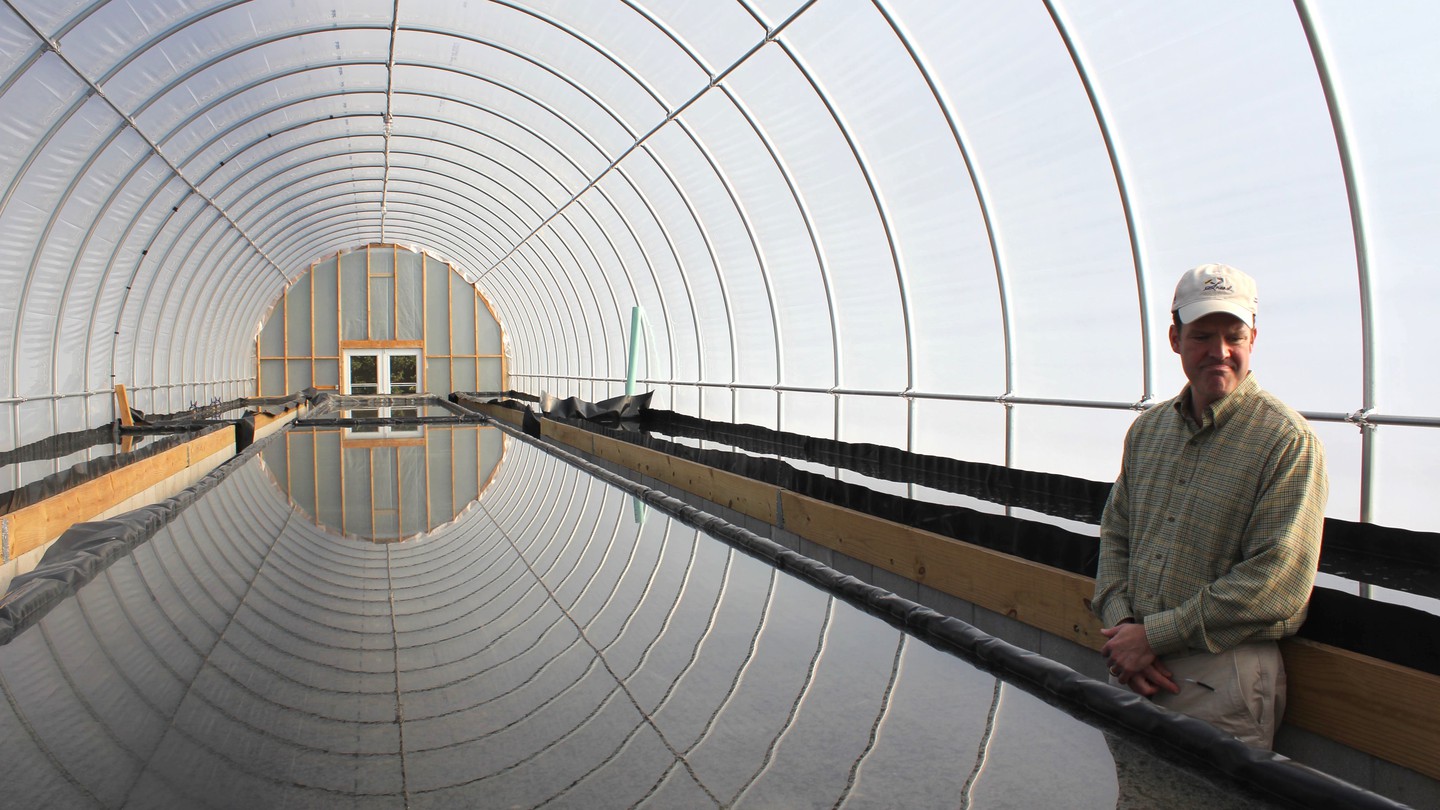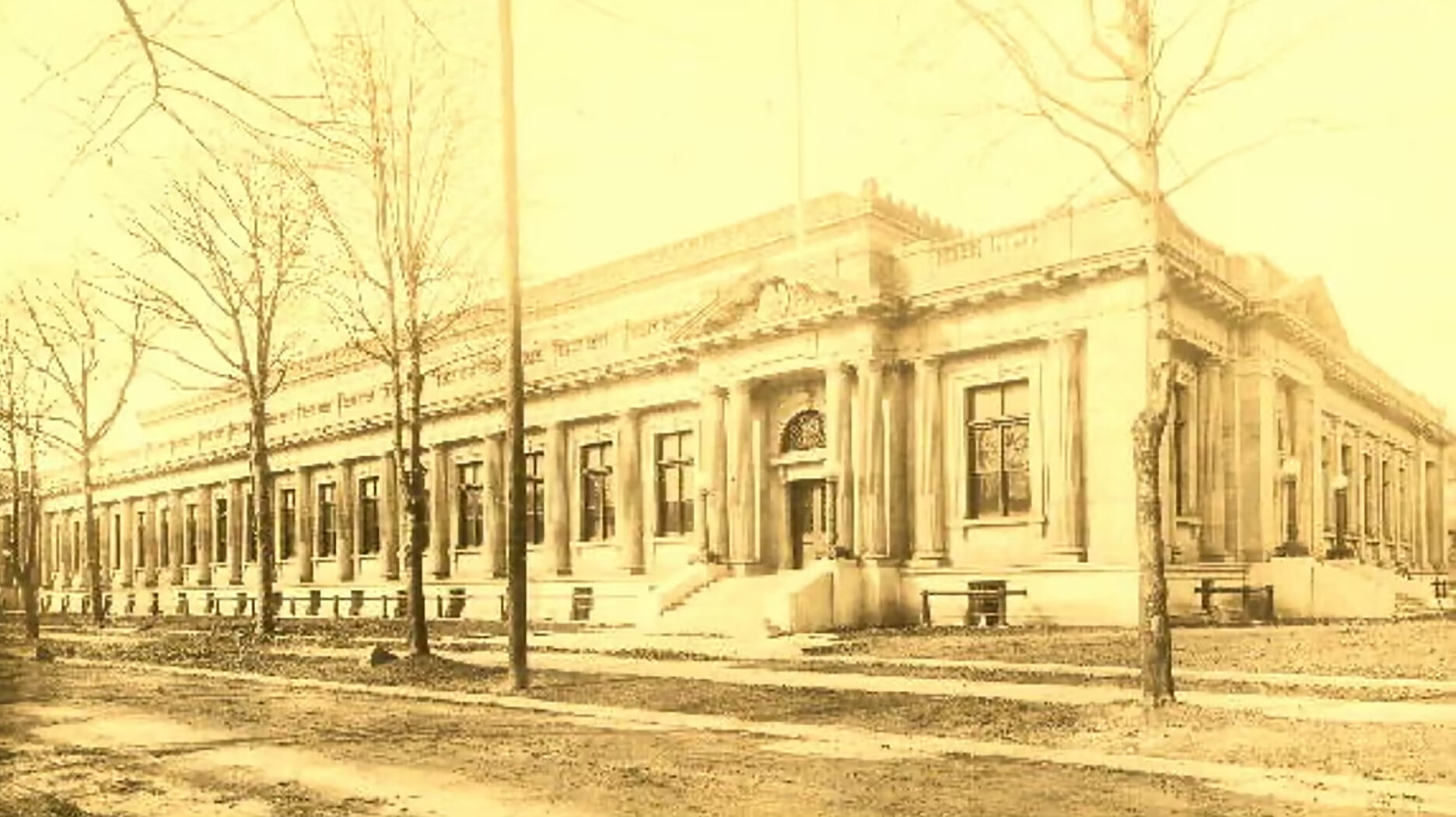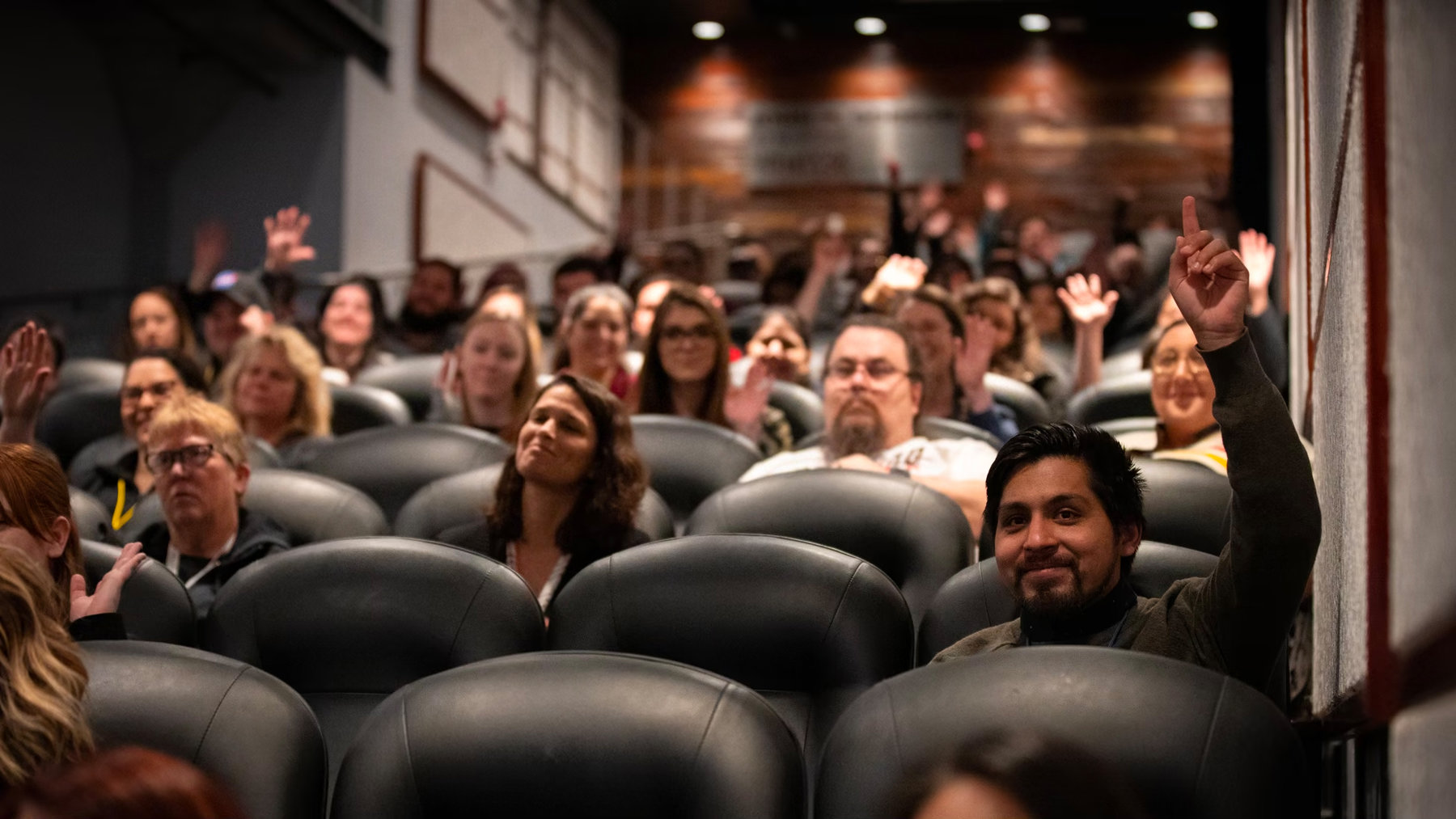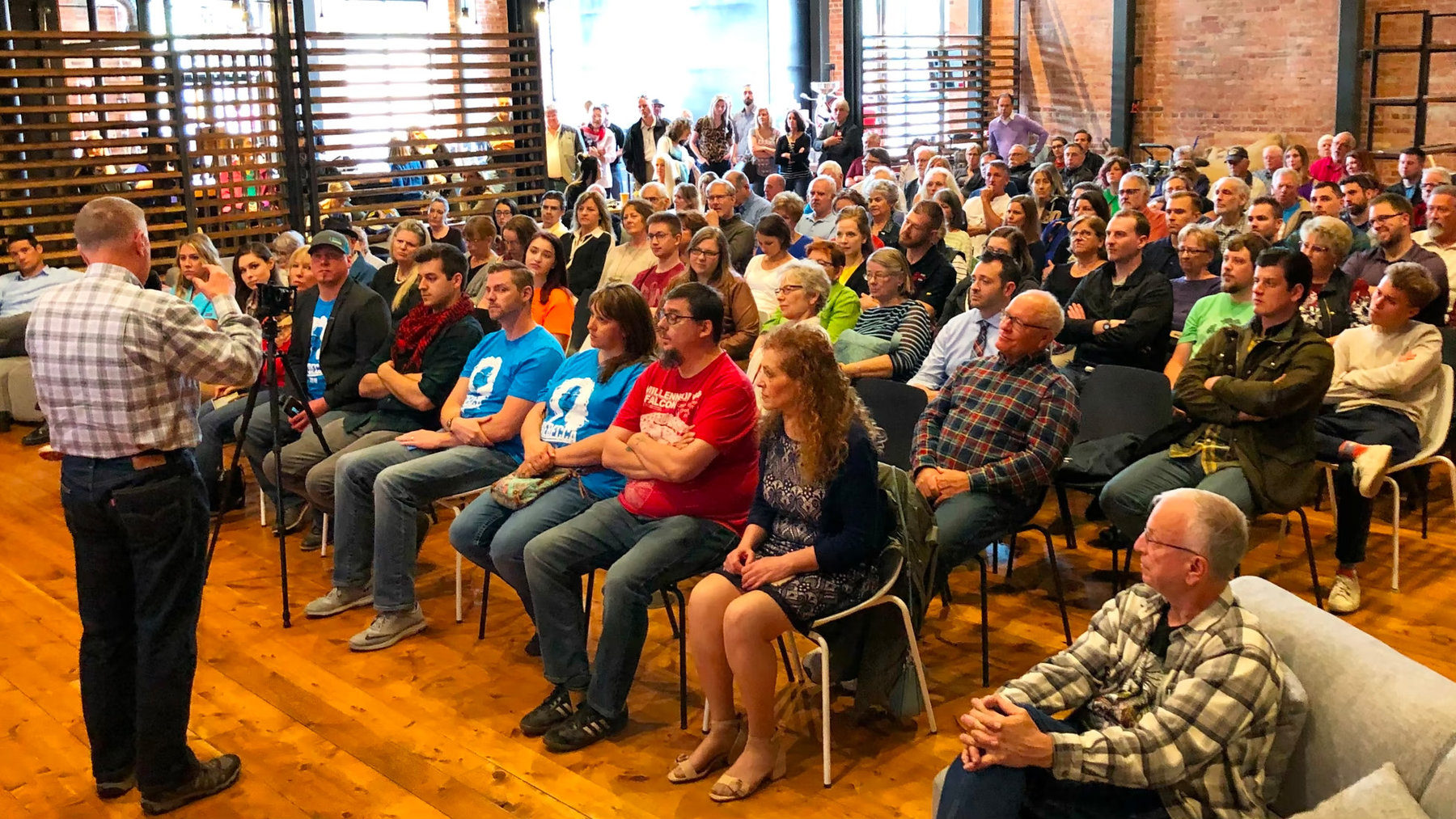Fair warning: I am not going to try to strap any Larger Policy Significance onto this report. It was just one of the more interesting things we’ve seen on our travel, and we wanted to let others know about it.
Our story starts some 600 million years ago, when a body of water now known as the Iapetus Ocean lay beneath what is now the eastern coast of North America. That’s about as much geology as you’re getting from me. For more, you can start here, but I will tell you where the ocean’s name comes from:
The modern Atlantic Ocean was named after the mythological Greek god Atlantis…. In Greek mythology, Iapetus was the father of Atlantis, so the older ocean is named after the older mythological figure. (The Iapetus Ocean disappeared as continental plates shifted around and recombined as Pangea. After Pangea broke up, a younger ocean – the Atlantic – formed between Africa and North America.)
Now we zoom ahead in time to about 250 years ago, in the late 1700s, when (according to local histories) a white settler named Mary Draper Ingles was captured by Indians in the Kanawha Valley of what is now West Virginia. While captive, she became proficient at making salt from the brine that bubbled up in a nearby salt lick. To connect the themes here, that brine was in fact from underground remnants of the Iapetus Ocean forcing their way upward.
By 200 years ago, around 1815, the Kanawha Valley was full of “salt furnaces,” where people boiled down the bubbling-up brine to make salt, and then shipped that salt largely to the emerging meat-packing center of Cincinnati. The locals’ main competition was from salt makers in Syracuse, New York. By 1850, the Charleston/Kanawha area was the salt-making center of the country.

And then … well, we’re getting ahead of ourselves, but the name “Great Salt Lake” might give one clue to where the trouble lay. For reasons we don’t need to get into, the salt industry that had been so important to this part of the country through the mid-19th century was by the mid-20th century all but gone. The Dickinson’s Kanawha Salt that had won a medal as world’s best salt at the London World’s Fair in the 1850s was by the 1950s shuttered and out of business.
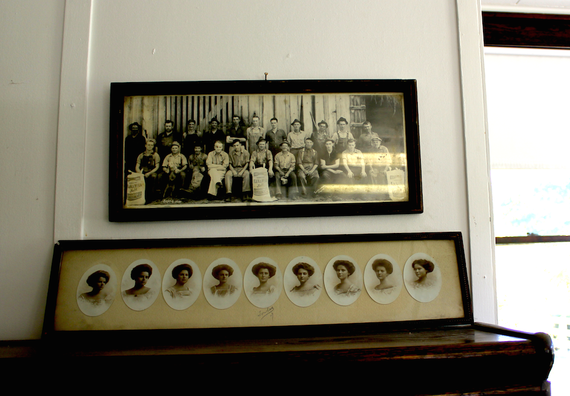
A few years ago, the story changed. Lewis Payne and Nancy Bruns, a brother and sister who were seventh-generation descendants of the original salt-making family (which still has extensive land holdings in the area), decided to re-start the salt business as an artisanal operation. “The brine was still there!” Payne told us at the factory in the small town of Malden last month, where we’d been guided by Bob Coffield of Charleston.

The family’s forebears had felled trees and, when the trees were gone, used coal to stoke fires and boil off the brine. Payne and Bruns instead went all-solar, building big greenhouse-like evaporation rooms in which the brine could go through the various stages of its conversion into pure salt.
It sounds improbable, but here is some of the way it looks. First at right, Payne standing near one of the original drill sites, from the olden days of the salt works.
Today’s brine comes from a pump housed inside an ordinary-looking shed. Then it goes into the first of several evaporation chambers:
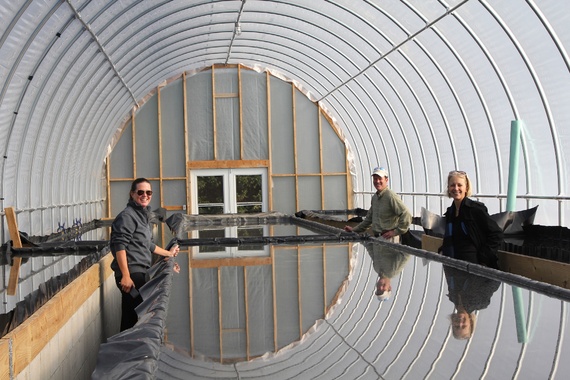
Through a series of rooms and tanks, through a process described on the company’s site here, the liquid is brought to higher and higher degrees of concentration, until finally it can be scraped off and harvested, as the Paynes are doing here:
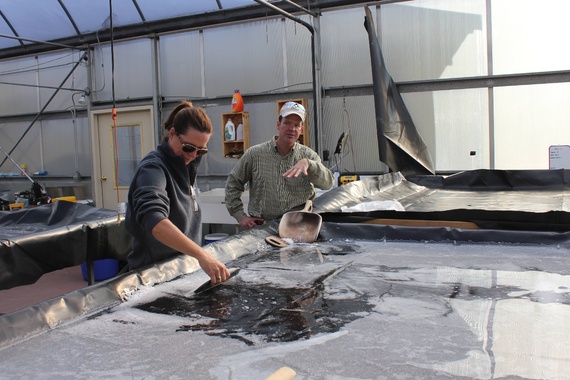
With tools like this:
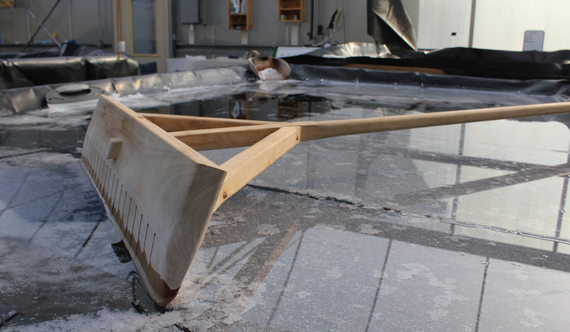
And packed into sacks for further drip-drying:
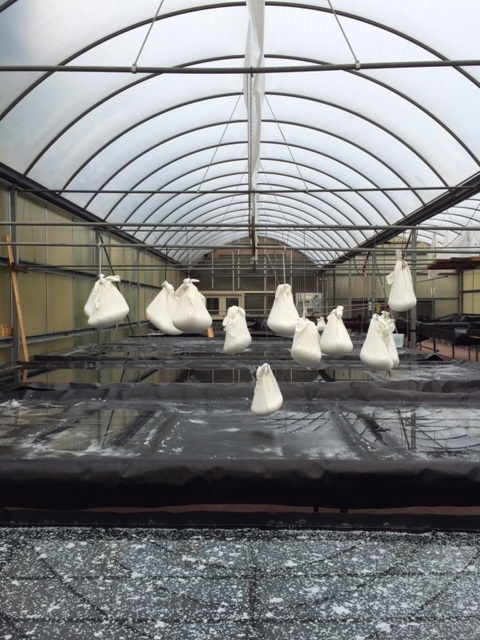
And yielding finally tubs of pure, hand harvested salt, which is now shipped around the country to restaurants and gourmet shops.
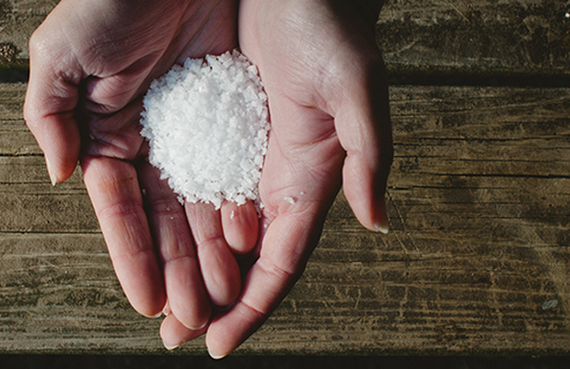
Never confident in my culinary judgment, I sheepishly asked the Paynes: Salt is salt, right? Really, how different can it taste? They took turns informing me both about the science and the art behind their claims. Science: pristine brine, zillions of years old, free of contaminants, etc. Art: “People stop me on the street to say they’ve started using our salt, and friends ask them why the food suddenly tastes so much better.”
Obviously they’re biased sources. But they gave us a little taste of their product, which turned out to be hyper-salty, and very good. We bought numerous little gift packs: friends and relatives, look for salt under the tree! Is it expensive? Of course—but for a high-end product being able to command a premium price is much of the point. You can check out more information on their site, or read about them in the Charleston Gazette or the Charleston Daily Mail, or on Martha Stewart’s site.
As advertised, there’s no policy lesson here. And this is clearly no large-scale answer for a region that has lost much of its 20th-century mining and manufacturing base. But it deserves note as an innovative re-use of local resources. The test of an interesting day on the road is whether you go to sleep having seen things you’d had no way to anticipate when you got up. It met that test and more.

